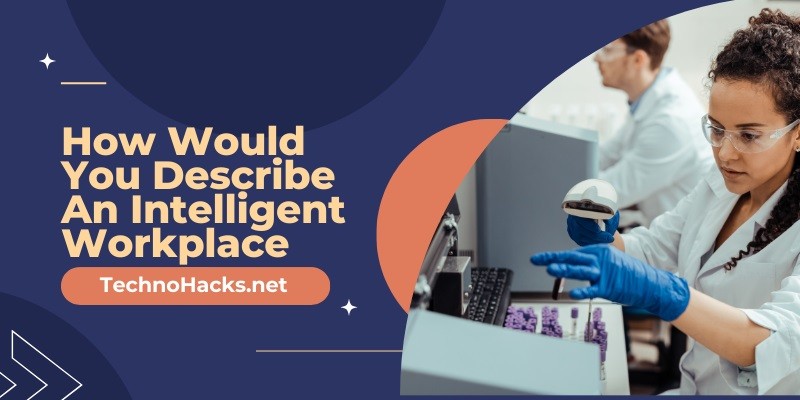Last Updated on May 5, 2025 by Jim C.
In today’s rapidly evolving business landscape, the concept of an intelligent workplace has emerged as a transformative force, reshaping how organizations operate and employees interact. An intelligent workplace leverages cutting-edge technologies, data-driven insights, and human-centered design to create a more productive, engaging, and innovative work environment. This article explores the key aspects of an intelligent workplace, its benefits, challenges, and future trends.
Definition of an Intelligent Workplace
An intelligent workplace can be defined as a digitally transformed work environment that seamlessly integrates technology, data, and human-focused design to enhance productivity, collaboration, and employee experience. According to Rachel McCormick at Accenture, “The intelligent workplace, at its core, looks to re-energize the workplace towards a human-focused design — creating seamless transitions between working in person and remotely, allowing us to enjoy the benefits of both”.
This definition emphasizes the importance of balancing technological advancements with human needs, recognizing that an intelligent workplace should cater to both in-person and remote work scenarios. It’s not just about implementing new technologies; it’s about creating an ecosystem that empowers employees to work more efficiently and effectively, regardless of their physical location.
Core Components of an Intelligent Workplace
Digital Tools and Automation
At the heart of an intelligent workplace are advanced digital tools and automation technologies. These include:
- Artificial Intelligence (AI) and Machine Learning (ML): Used to automate repetitive tasks, provide predictive insights, and enhance decision-making processes.
- Internet of Things (IoT): Enables the interconnection of various devices and systems, creating a more responsive and adaptive work environment.
- Cloud Computing: Facilitates seamless access to information and applications from anywhere, supporting remote and flexible work arrangements.
Seamless Access to Information
An intelligent workplace prioritizes easy access to relevant information:
- Enterprise Search: Implements smart search capabilities to quickly retrieve pertinent data and documents.
- Knowledge Management Systems: Preserves and makes available an organization’s intellectual capital, reducing the need to recreate existing content.
- Integrated Platforms: Combines various digital tools into a unified system for streamlined workflows.
Enhanced Communication and Collaboration
Intelligent workplaces foster better communication and collaboration through:
- Advanced Communication Tools: Utilizes platforms like Slack, Microsoft Teams, and Zoom for real-time and asynchronous communication.
- Virtual and Augmented Reality: Implements immersive technologies for training, remote collaboration, and enhanced visualization of complex data.
- Smart Meeting Room Management: Optimizes space utilization and facilitates seamless booking of meeting rooms and workspaces.
Benefits of an Intelligent Workplace
The implementation of an intelligent workplace offers numerous advantages for both employees and organizations:
Increased Productivity
By automating routine tasks and providing easy access to information, intelligent workplaces can significantly boost productivity. For instance, saving each employee just 5 minutes per day through automation and streamlined processes can accumulate substantial time savings across an organization.
Enhanced Employee Experience
Intelligent workplaces prioritize employee satisfaction by offering:
- Flexible Work Options: Supports remote and hybrid work models, catering to diverse employee preferences.
- Personalized Digital Workspaces: Tailors the digital environment to individual needs and work styles.
- Improved Work-Life Balance: Facilitates better time management and reduces stress through smart scheduling and task prioritization.
Improved Collaboration and Innovation
Intelligent workplaces foster a culture of collaboration and innovation by:
- Facilitating Real-Time Communication: Enables seamless interaction between team members, regardless of location.
- Encouraging Knowledge Sharing: Promotes the exchange of ideas and best practices through integrated knowledge management systems.
- Supporting Data-Driven Decision Making: Provides analytics and insights to inform strategic choices and drive innovation.
Challenges and Solutions
While the benefits of an intelligent workplace are significant, organizations may face several challenges in implementation:
Data Security and Privacy
With increased digital integration comes heightened concerns about data security and privacy. Organizations must invest in robust cybersecurity measures, implement strict data governance policies, and ensure compliance with relevant regulations.
Technology Integration and Adoption
Integrating various technologies and ensuring smooth adoption by employees can be complex. Organizations should focus on:
- Comprehensive Training Programs: Equip employees with the necessary skills to leverage new technologies effectively.
- Phased Implementation: Gradually introduce new tools and systems to avoid overwhelming employees.
- Continuous Support: Provide ongoing assistance and resources to address user concerns and challenges.
Cost of Implementation
The initial investment in intelligent workplace technologies can be substantial. Organizations should:
- Conduct thorough cost-benefit analyses to justify investments.
- Explore scalable solutions that can grow with the organization’s needs.
- Consider cloud-based services to reduce upfront infrastructure costs.
Future Trends in Intelligent Workplaces
As technology continues to evolve, several trends are shaping the future of intelligent workplaces:
- Increased AI and ML Integration: More sophisticated AI-driven tools will emerge to further enhance productivity and decision-making.
- Augmented and Virtual Reality: These technologies will play a larger role in remote collaboration, training, and data visualization.
- Enhanced Focus on Employee Well-being: Intelligent workplaces will incorporate more features to support mental health and work-life balance.
- Sustainability Integration: Smart technologies will be leveraged to create more environmentally friendly and energy-efficient workspaces.
- Holographic Telepresence: Advanced communication technologies may enable more immersive remote collaboration experiences.
Conclusion
The intelligent workplace represents a paradigm shift in how we conceive and design work environments. By leveraging cutting-edge technologies, data-driven insights, and human-centered design principles, organizations can create spaces that not only enhance productivity but also foster innovation, collaboration, and employee satisfaction.

